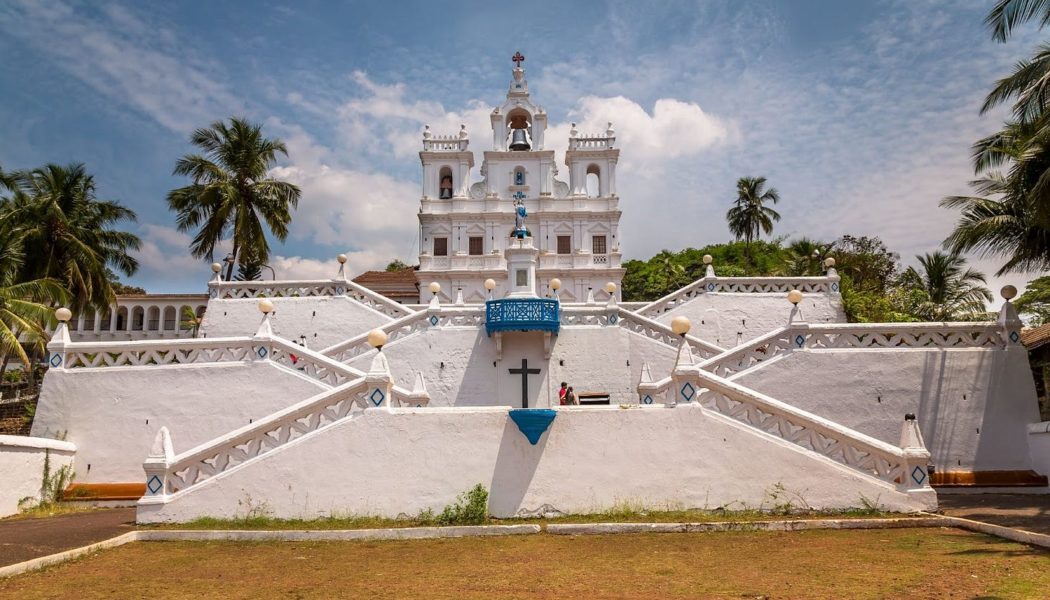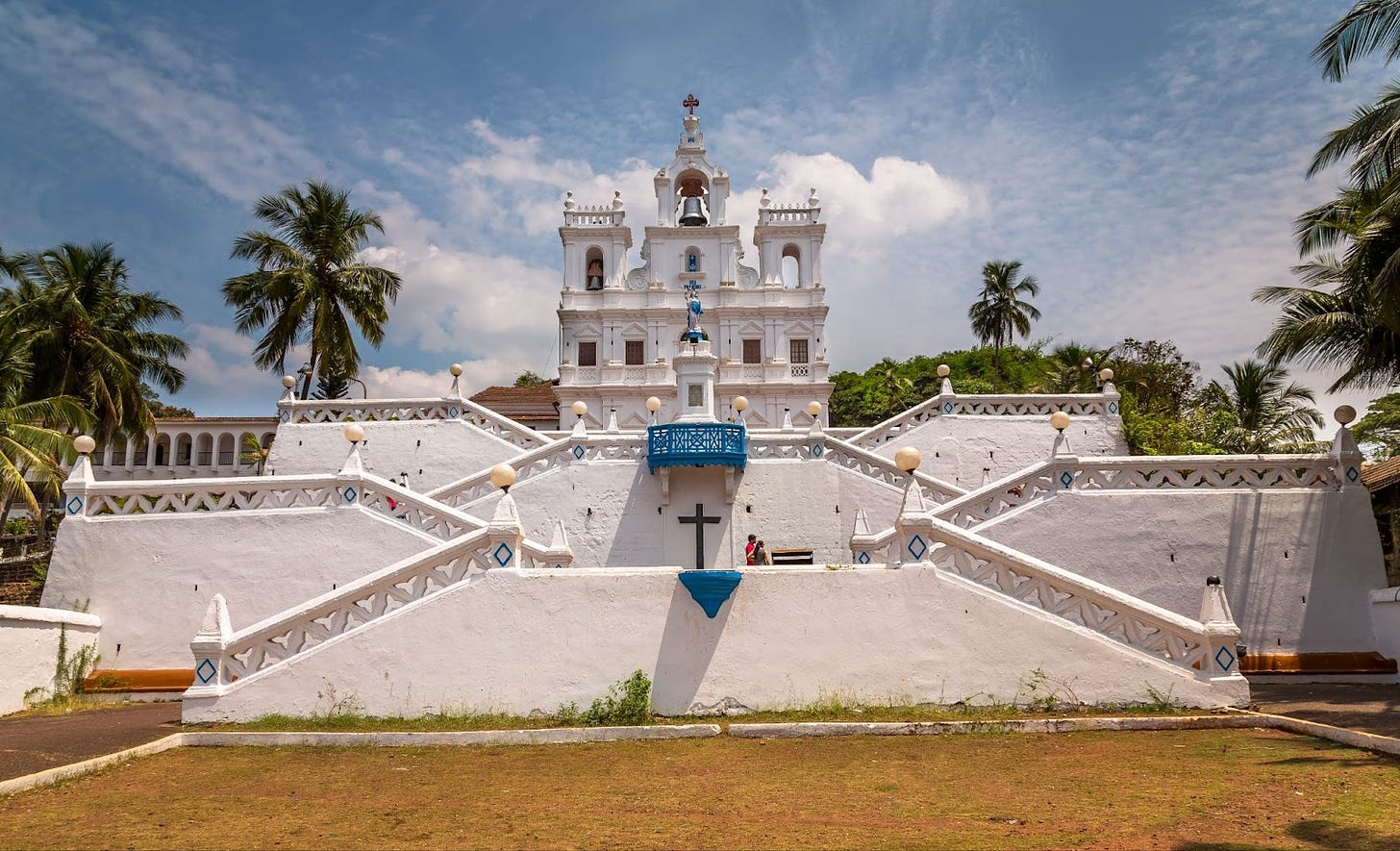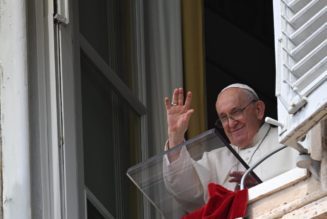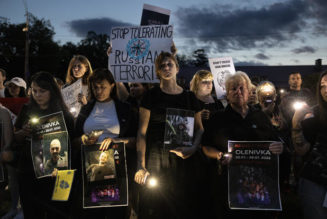Catholics in the Indian state of Goa are feeling unease amid calls by the state’s Chief Minister, Pramod Sawant, to “wipe out” signs of the Portuguese presence in the region.
While most of India achieved independence from Britain in 1947, Portugal ruled Goa as a colony from 1510 to 1961, when the recently independent Indian Union invaded, sounding the death knell for European power on the subcontinent.
Some Goans, mostly Christians, left for Portugal or for its remaining colonies, especially Angola or Mozambique, but the majority stayed behind, and Goa remains one of the most Christian states in India, with Catholics accounting for around 20% of the population.
The Archbishop of Goa has the title of Patriarch of the East Indies, and Goan influence on Catholicism in India is so significant that a quick look through all living Indian bishops reveals more than 40 with unmistakably Portuguese surnames, meaning there are actually more bishops with Portuguese surnames in India than in Portugal.
“Christians and Hindus lived in unity and harmony in Goa for over 400 years, we have never had a fight between us”, says John Lobo, a local historian, in a phone interview with The Pillar. But this harmony and stability is now under threat with the growing Hindu nationalist rhetoric coming from the Bharatiya Janata Party (BJP) which controls the central Government in Delhi, as well as the local Government in Goa.
Chief Minister Sawant was recently quoted as saying that, more than 60 years after the end of Portuguese rule, “the time has come to wipe out signs of the Portuguese and have a fresh start.”
But how much of that presence does he want to erase? “That’s the scary part,” said Lobo. “If you take it to an extreme level, it would go so far as destroying all the churches, it could go so far as destroying all the architecture the Portuguese built, and it could also mean persecuting the Christians.”
Christians are subjected to persecution in several parts of India, and the level of harassment in Goa is nowhere near as severe as what is happening in the state of Manipur at the moment, for example. But Lobo explained that the effects of the BJP rhetoric are already making themselves felt.
“We are now seeing minor incidents of fighting between Hindus and Catholics, because of all the fundamentalism, so it is a major risk for Goa and for the whole of India,” he said. “I have been in recent discussions with people where they make statements to the effect that this is Hindustan – which is what India is called in Hindi – and Hindustan is a place for Hindus. And the sad part is that I have had these discussions with very educated people. I never felt this growing up”.
Something unique and spectacular
Lobo is himself a Catholic Goan. As such, he says, he never felt he had to choose between his Indian or his Portuguese heritage.
“It is not a conflict. I am not Portuguese, I am an Indian, but I do have a lot of Portuguese culture. It is a mix. If I were to define myself, I am a Goan,” he told The Pillar.
“Being Goan means that I have influences of the West, through the Portuguese, and of the East, because of India. So, I can be unique, something spectacular, and that is exactly what Goans are, we are different, but we have amalgamated into India, we have our own customs, our own culture: that very culture is what makes Goa India’s number one tourist destination today, because everybody from the rest of India wants to come to Goa and is mesmerized by this amazing culture.”
Lobo’s historical perspective is very different from that of the Chief Minister, who accused the Portuguese of looting Goa and destroying its Hindu culture. “The Portuguese actually added to the culture of India,” he said.
“For example, many of the things essential to Indian cuisine today were brought to India by the Portuguese, such as tomatoes, potatoes, even chili. Vindaloo is based on a Portuguese recipe. It is true that when the Portuguese came, initially, they destroyed some temples. But they did not destroy the entire culture of India.”
“Sawant is using a political narrative to get the majority Hindu population to vote for him, saying that all the colonialists were really bad, and therefore the Portuguese were really bad. But that’s not true. The English, who were in other parts of India, were terrible, they treated Indians as second-class citizens. But the Portuguese gave us Portuguese nationality, they gave us absolutely the same rights as all other people in Portugal. So, what he is saying is absolute rubbish.”
Pedro Madureira Miguel is a Portuguese historian who is part Goan on his father’s side and has led excursions to Goa. When asked about Chief Minister Sawant’s remarks, he responded derisively.
“These people from the ruling party are completely nuts,” he said. “Erasing all vestiges of Portuguese culture from Goa would imply razing all of Old Goa, all of Panjim, the hotels, everything. And it would also imply removing the whole of the Goan population. So good luck with that.”
Lobo, however, says that the latter part of the plan may already be under way. “They will just bring people from other parts of India to Goa, which they are already doing,” he said.
“By doing that, the population of Goans is diluted, and we are no longer an electoral force. Then you will have some churches, and some monuments, but they will be without the soul of the people”.
Addition, rather than subtraction
The Pillar also spoke by telephone to a Goan architect of Portuguese descent, who asked not to be named, fearing reprisals from the current political rulers. He believes that rather than demolishing buildings and deporting the Christian population, Hindu nationalists will adopt strategies used elsewhere, which he describes as “redefining the cultural landscape by addition, rather than subtraction.”
“It could mean that Sawant will try to bring elements into our urban spaces that conform to the new narrative. This was started by the central government, which has been trying to dominate the culture by bringing in large monuments of Indian leaders.”
Goan architecture is a unique and important part of the local heritage, he explained.
“We have had four and a half centuries, first of colonial architecture, and then Indo-Portuguese architecture, which today we call Goan architecture, and which actually dominates our landscape, and this is what brings people from outside Goa to invest here,” said the architect. “There is nothing close to this outside of Goa. There is a lot of British architecture, but nothing like what we have here.”
But the architect was less concerned with the actual effects of Sawant’s rhetoric than Lobo.
“It comes from outside, there has not been a single Goan, until today, saying that we need to change course, but outside it is being said every day,” he said.
“In other parts of India they are trying to force the Muslims to live in a particular way, they trouble them when they go to school in their burqas, we read about all these things happening outside. Chief minister Sawant is probably just mouthing whatever is not being said in Goa. At the end of the day, he has to make statements that confirm his allegiance to the party. But how many Goans are actually convinced by this, remains to be seen. The ones I know do not seem to give it much attention.”
Watching, from a distance
And where does Portugal, the former colonial power, stand in all this? The small European country has always fostered good relations with its former colonies, and in the case of India the connection is strengthened by the fact that Portuguese prime-minister António Costa is himself half-Goan. In fact, within the Indian caste system, Costa is a brahman, and as such is treated to the highest honours when he visits the country.
Portugal actually had three possessions in India: Goa, Daman and Diu, of which Goa was the largest and the most famous. A recent case in Daman, however, caused some concern, when local authorities, also BJP, planned to forcefully purchase and then demolish a 16th Century Chapel to make way for a football ground.
The local Catholic population protested, but the situation was only resolved when the Portuguese foreign ministry discretely intervened. The chapel appears to be safe, for now.
Back in Goa, John Lobo said he is surprised that the Portuguese government has been silent about the current situation and threats made by the political class.
“I don’t think the Portuguese government is doing enough. India considers Portugal an ally. When these things are said, the Portuguese should issue a statement saying this is incorrect, and that it will talk to India at a higher level to make sure they are not repeated. But nothing has come, and I am surprised.”
A senior official in the Portuguese Ministry of Foreign Affairs, however, assured The Pillar that Lisbon is very much aware of what is going on in Goa.
“These statements are mostly for internal consumption,” he said, asking not to be named because they are not authorized to comment publicly on the situation.
“They are recurrent in Goan politics, for reasons that really have nothing to do with Portugal”, he added. “The worst thing we could do would be to respond, or to mention the issue.”
Comments 5
Services Marketplace – Listings, Bookings & Reviews








